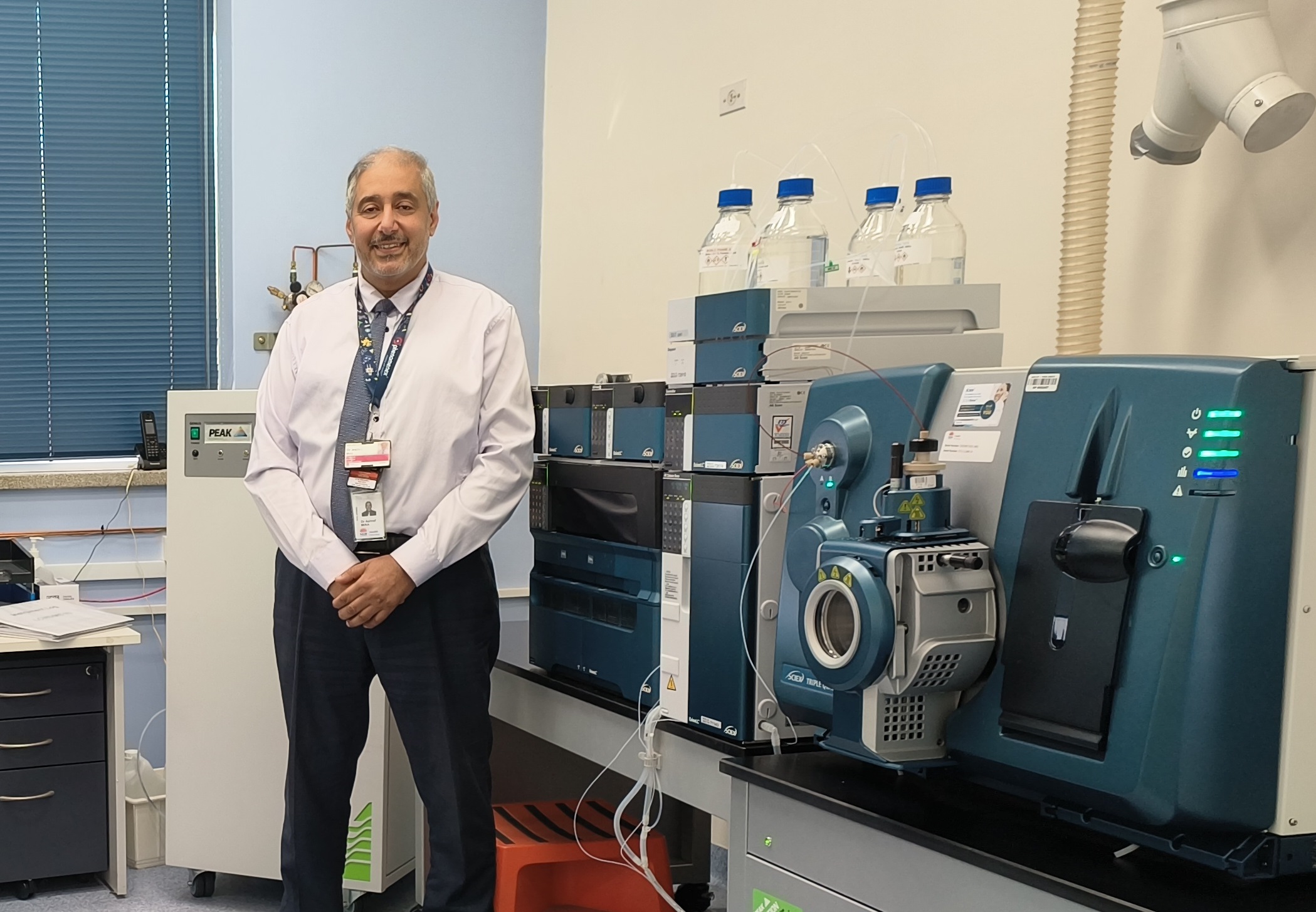Media Resources & Contact
In this story

Testing urine for drugs is a well-accepted scientific process, providing verifiable and reliable results. But testing whether the urine is real and not synthetic or adulterated has been more difficult, until now.
Dr Ashraf Mina is a principal scientist at NSW Health Pathology’s Forensic & Analytical Science Service, based at the Drug Toxicology Unit, which tests urine samples for evidence of drugs, both drugs of abuse and therapeutic.
He says a chance conversation a couple of years ago got him wondering why there are no definitive tests to determine that a urine sample is actually real human urine.
“There is no standard for it worldwide, there are some attempts to test for the most common parameters in urine, but they can be exactly mimicked in synthetic urine,” Dr Mina said.
So, he got to work and has developed a novel approach to sample validity testing and he recently presented his findings to a research symposium at Westmead Hospital.
“We’ve designed the test on two levels,” Dr Mina explained.
“Level one we test for four parameters – creatinine, pH, specific gravity, and oxidant assay – and they are basically testing for both sample dilution and some other iterations.
“If we pick up anything, we go to sample validity testing level two which is this newly developed method in which we can analyse 23 different parameters that are always present in human urine and should be there in a sample.”

He says the method is already helping to detect cases where urine samples have been tampered with to avoid drug detection.
“We had a case recently where we found a parent drug in a urine sample but not its metabolites. When the sample was tested by the new method, it seemed to be water spiked with a drug and was not a biological sample.
“So that’s telling us that someone topped the water up with some drugs to show that they are taking their medication because we didn’t find the drug metabolites or any of the 23 markers we identified for urine.”
Dr Mina says the testing is done at the same time as the sample is analysed for more than 70 drugs so there is no loss of efficiency for the laboratory.
“In developing this test we asked is it synthetic urine? Is it substituted urine? Is there an added adulterant to the urine? This method answers all those questions, and we are the only lab in Australia, and possibly the world, currently able to do this.”
Dr Mina will also be presenting his research at the upcoming IAFS conference in Sydney in November 2023.


